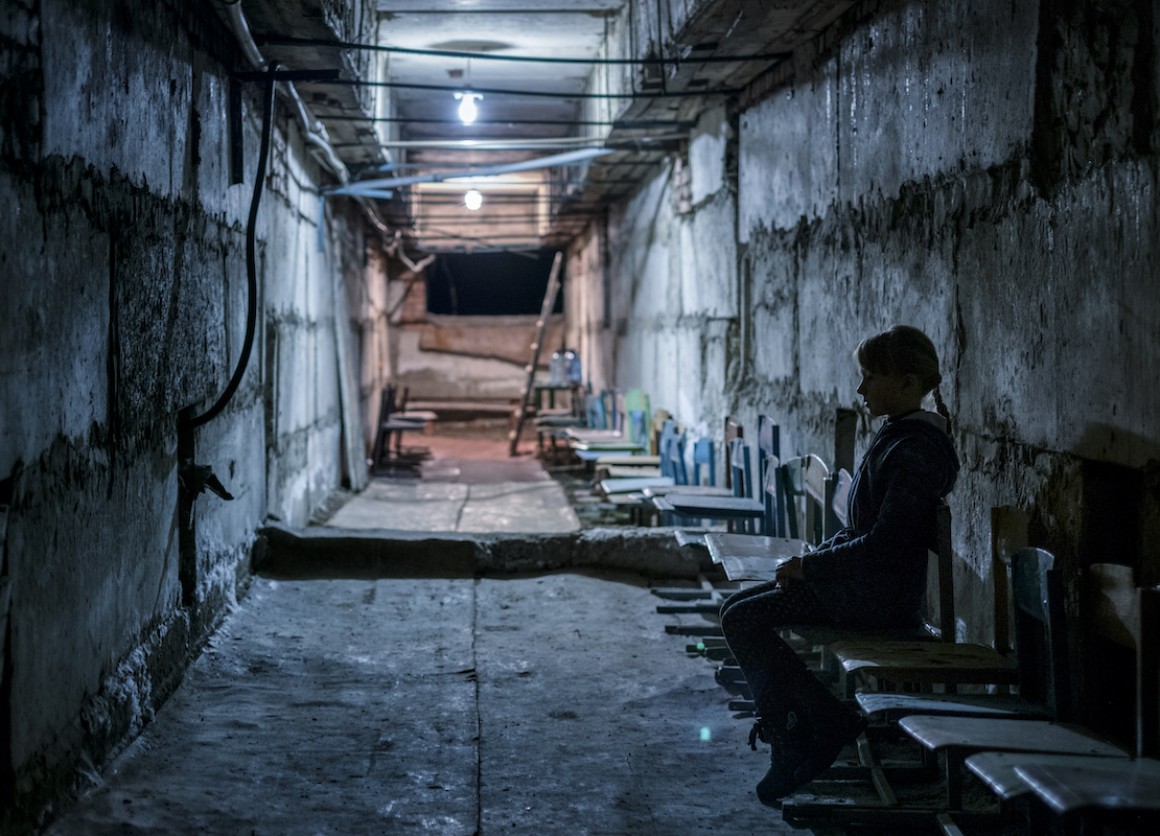As Ukraine declared a nationwide state of emergency on Thursday, UNICEF appealed to all warring parties in the eastern region to allow full humanitarian access to families and children who have long suffered the adverse effects of the protracted conflict in the country — and whose lives and well-being are now under even greater threat.
“Heavy weapons fire along the line of contact has already damaged critical water infrastructure and education facilities in recent days,” UNICEF Executive Director Catherine M. Russell said in a Feb. 24 statement. “Unless the fighting subsides, tens of thousands of families could be displaced, dramatically escalating humanitarian needs.”
Fighting has taken an increasingly heavy toll on Ukraine’s civilian population — including 510,000 children
UNICEF has been working nonstop across eastern Ukraine to scale up lifesaving programs for affected children and families as fighting has taken an increasingly heavy toll on the civilian population of 3.4 million people — including 510,000 children — living in the Donbas region.
Even before the military action reported on Feb. 24, the crisis had disrupted the daily lives of those living on both sides of the contact line between government- and non-government-controlled areas, leaving them in continued need of humanitarian assistance. The socio-economic strains and health impacts of the COVID-19 pandemic had only compounded the situation.
As needs escalate in line with the conflict, UNICEF is rapidly stepping up emergency response efforts from field offices in Kramatorsk, Mariupol, Luhansk and Donetsk.
UNICEF’s emergency response in Ukraine
Key emergency interventions include:
- prepositioning health, hygiene and emergency education supplies as close as possible to communities near the line of contact
- trucking safe water to conflict-affected areas
- supporting mobile child protection teams providing psychosocial care to children traumatized by chronic insecurity, responding to cases of violence and abuse against children and assisting children separated from family
- working with municipalities to ensure there is immediate help for children and families in need
Long-running programs already in place will continue as part of UNICEF’s action plan for the country for 2022. These include efforts to immunize children against measles and polio — there have been recent outbreaks of both vaccine-preventable diseases due to lapses in routine immunization coverage — and to shore up critical water, sanitation, electrical and heating facilities and school infrastructure that have already been heavily damaged and remain run-down.
Education support is focused on improving access to learning where it has flagged due to weak teaching capacities. Health and nutrition seeks to improve quality services where they remain limited.
“The past eight years of conflict have inflicted profound and lasting damage to children on both sides of the line of contact,” Russell said. “The children of Ukraine need peace, desperately, now.”
UNICEF joined UN Secretary-General António Guterres in calling for an immediate cease-fire, and for all parties to respect their international obligations to protect children from harm and to ensure that humanitarian actors can safely and quickly reach children in need. UNICEF also called on all parties to refrain from attacking water and sanitation systems, health facilities and schools — all critical infrastructure on which children depend.
Help UNICEF deliver aid to hundreds of thousands of children in Ukraine. Your contribution can make a difference. Please donate.
Nine-year-old Sasha at home in Bakhmutka, Donetsk, eastern Ukraine. © UNICEF/UN0243129/Morris VII Photo
Top photo: 10-year-old Lera sits in the basement bomb shelter at her school in Mariinka, Donetsk Oblast, eastern Ukraine.
